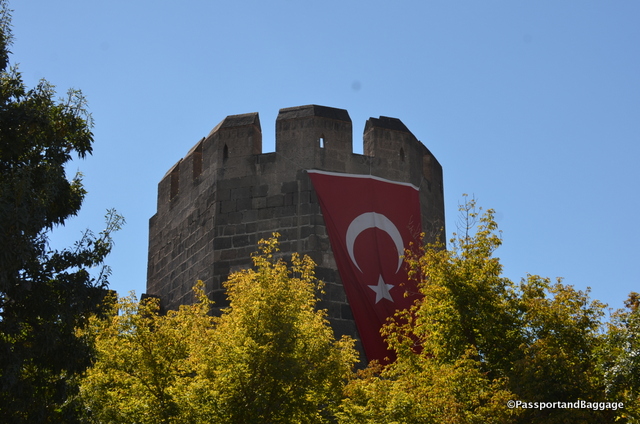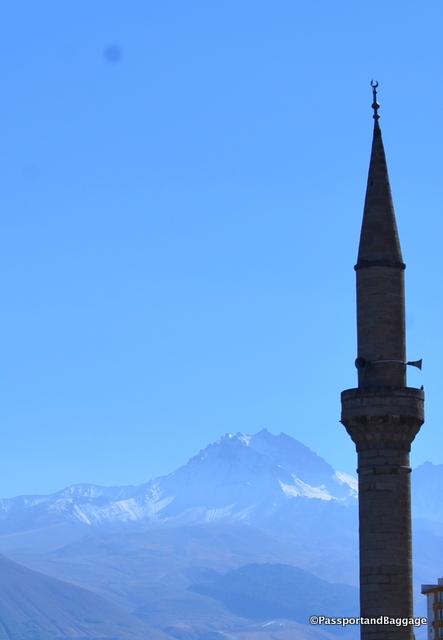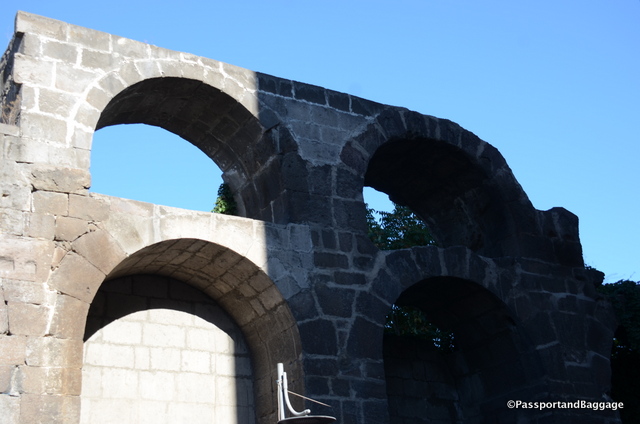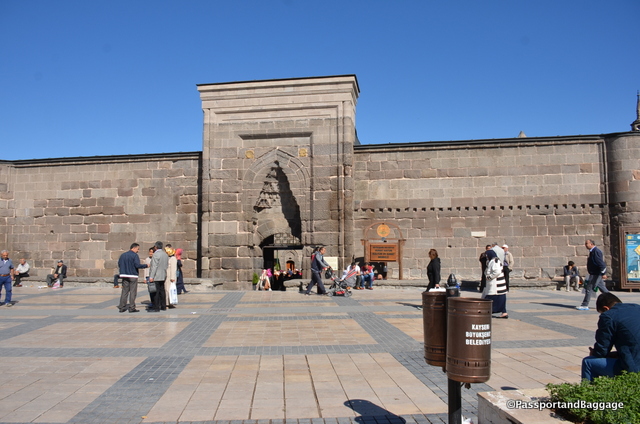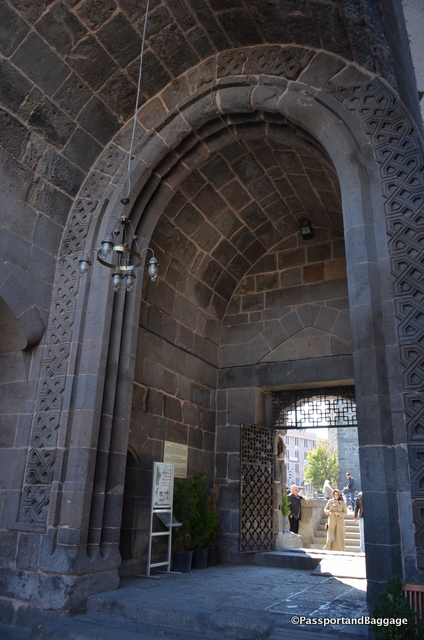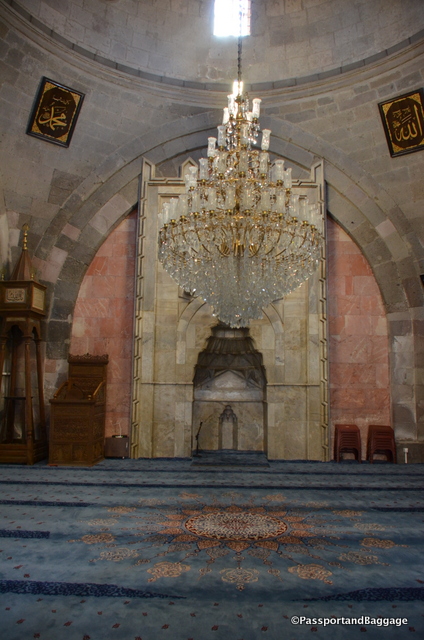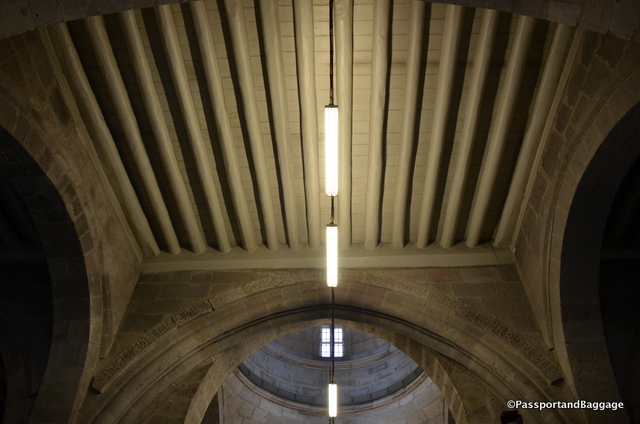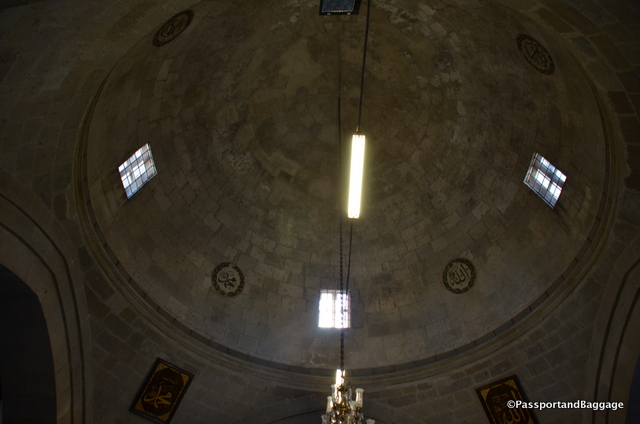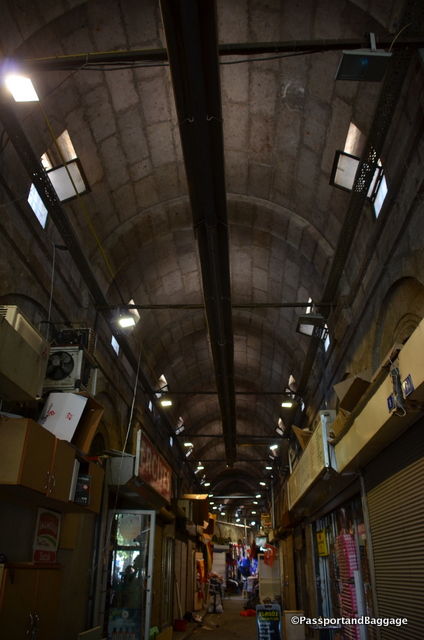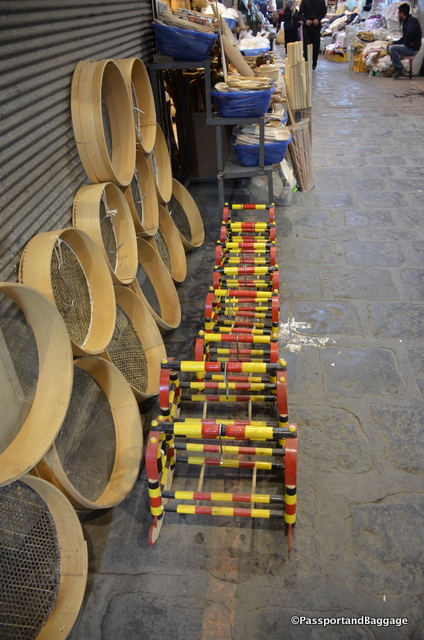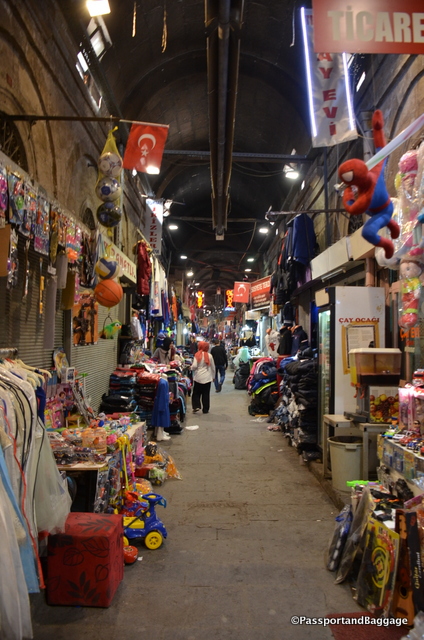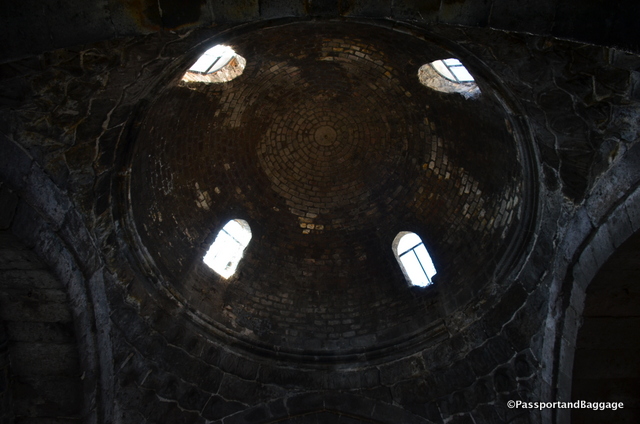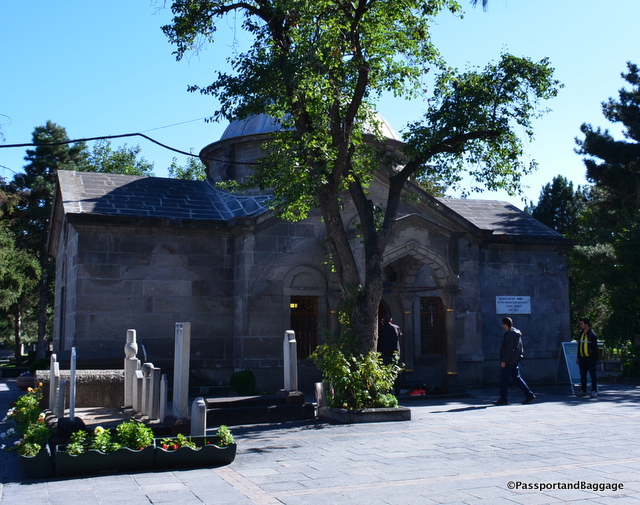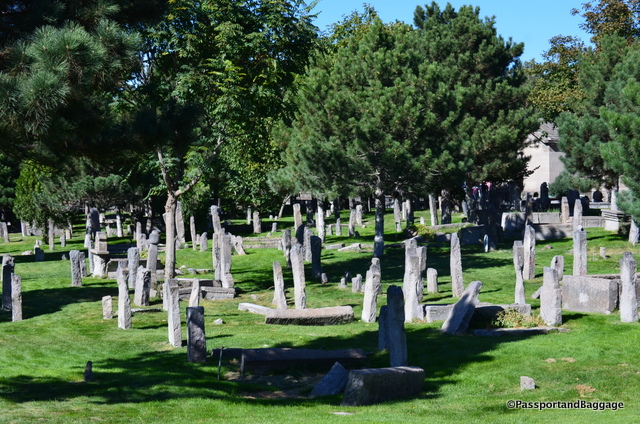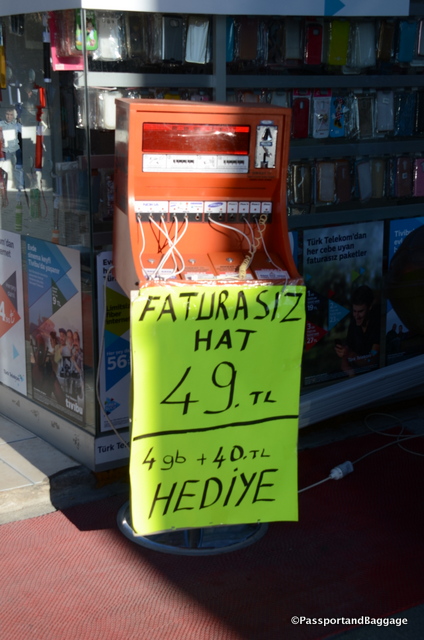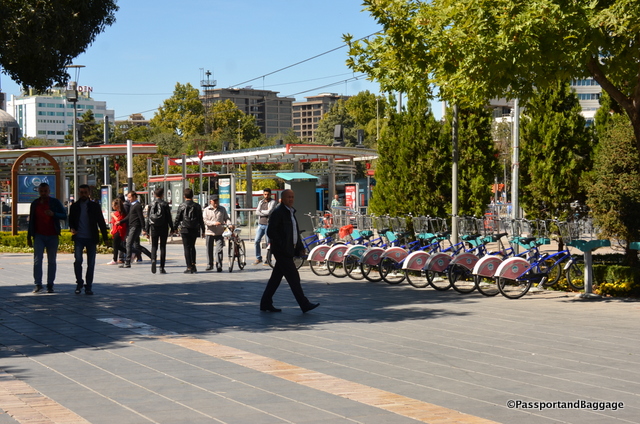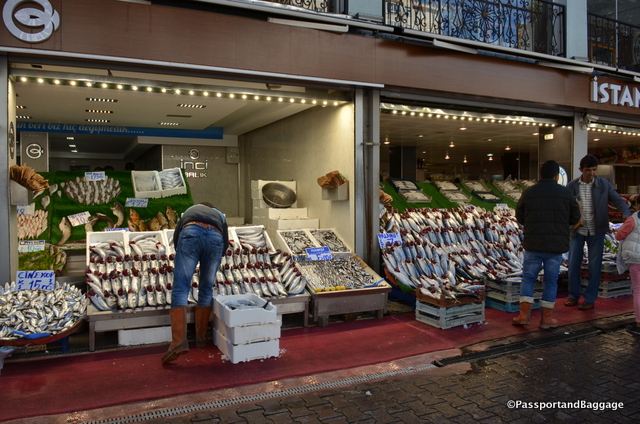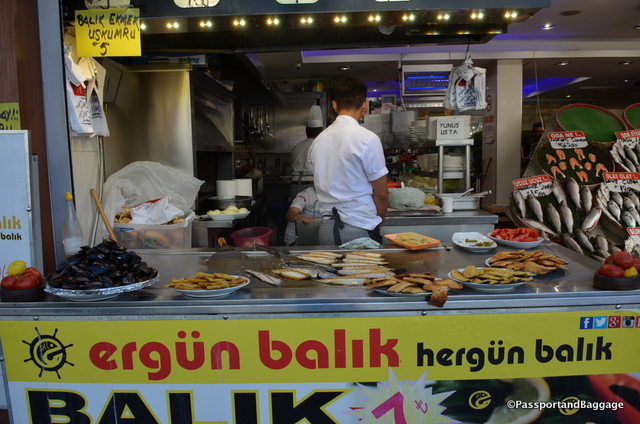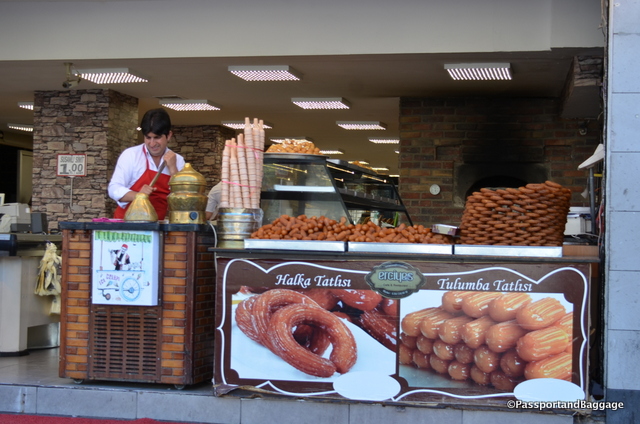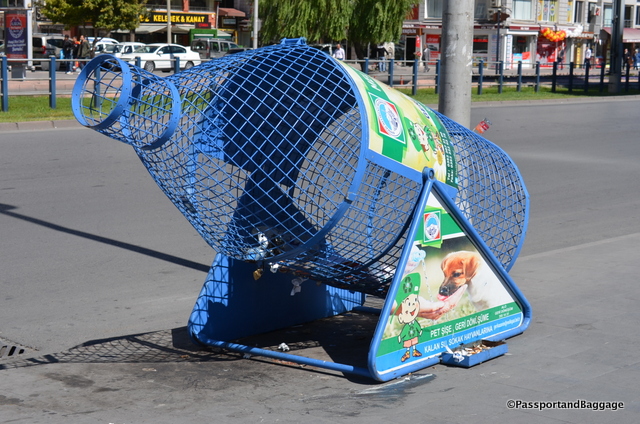September 25, 2016
Kayseri surprised me, I had read some article that gave me the impression it was a very small and backward city. That is absolutely not the case.
Kayseri is one of the more conservative cities of Turkey, but it is far from small or backward. It is, in fact, a large and industrialized city.
Kayseri is located at the foot of the extinct volcano Mount Erciyes that can be glimpsed here and there through the new high rises. The city is often cited in the top Turkish cities that fit the definition of Anatolian Tigers, (a term internationally used in the context of the Turkish economy to refer to and to explain the phenomenon of a number of cities in Turkey which have displayed impressive growth records since the 1980s). As of 2011 the city of Kayseri had a population of 844,656.
The city has been continuously inhabited since perhaps c. 3000 BC with the establishment of the ancient Hittite trading colony at Kultepe (Ash Mountain). The city has always been a vital trade center as it is located on major trade routes, particularly along the Great Silk Road.
The older portion of town is dominated by the 1500-year-old citadel, built initially by the Byzantines, and expanded by the Seljuks and Ottomans. The short-lived Seljuk rule left a large number of historic landmarks.
The Hunat Hatun complex, built in 1238 by Mahperi Huand Hatun is one of the most important complexes in Kayseri. It consists of a mosque, a madras, a Turkish bath, as well as the tomb of Mahperi Huand Hatun, wife of Alaeddin I Keykubad a prolific builder and a Seljuk sultan.
The Mosque Ulu was commissioned by Melik Mehmet Gazi (1134-1143), the third governor of the Danishmenid principality (before the Seljuks were in power in Kayseri). According to a plaque on the wall, the mosque collapsed in an earthquake in the 18th century (1720-1730) and was rebuilt. The original wood roof was restored in the 1960s.
There are three bazaars in Kayseri, all somehow connected together to create a labyrinth of shops. The first thing you notice is the lack of barkers, as in the Istanbul bazaar. While this is the second largest bazaar in Turkey, it is for the local people and not for the tourists, making for a much quieter experience. The three bazaars are Kapili Çarsi built in 1859, and Bedesten and Vizir Han that date from the 15th and 16th century.
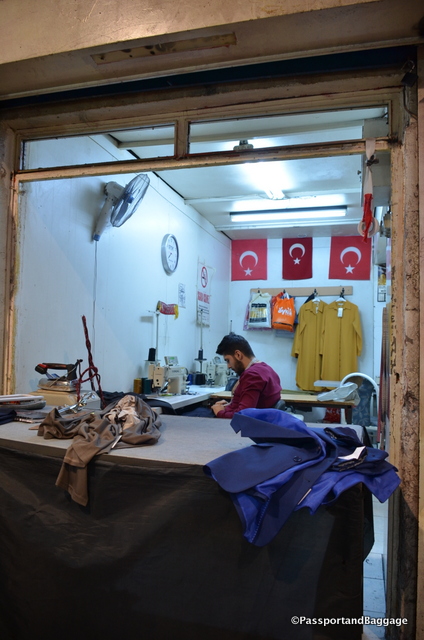
Male tailors, ironing and sewing can be seen throughout the bazaar. It was Sunday so there were not very many people working.
The caravanserai (where merchant traders gathered before forming a caravan) dates from around 1500, and is connected by a few feet of open walkway to the bazaars.
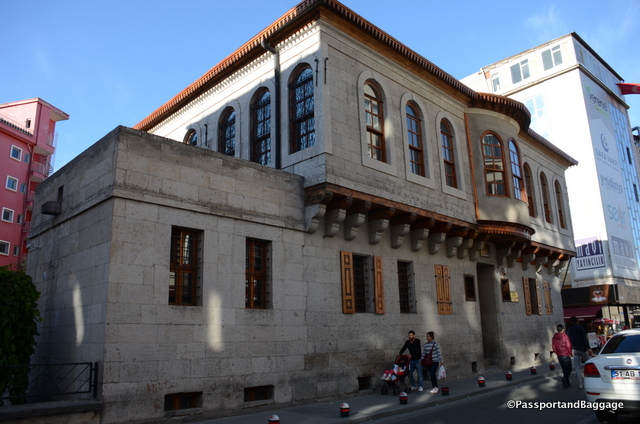
The town’s older districts (which were filled with ornate mansion-houses mostly dating from the 18th and 19th centuries) were subjected to wholesale demolitions starting in the 1970s, like so much of the world.
The city is famous for its carpet sellers like Savaş Imamoĝlu. Savaş waylaid me outside of the market. I am usually very good at getting away, but no such luck. It was worth it however, as he took me inside the mosque, through the caravansary on the way to, you guessed it, his rug store.
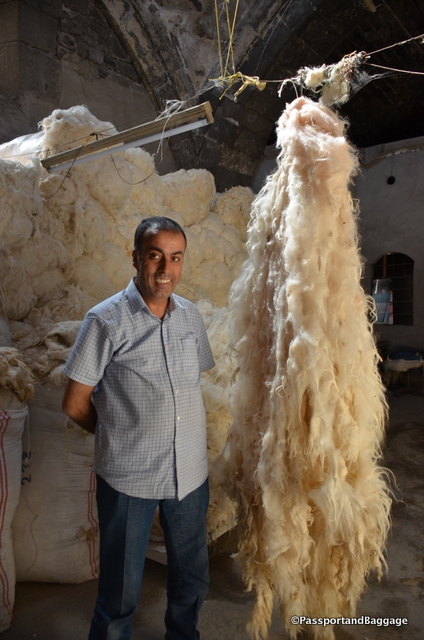
Savas’ family is in the wool business, they then contract with women around Turkey to turn their wool into Kilim carpets
Since I was taking notes, he assumed I was a reporter, so I learned quite a bit from him. His family has been in the business for over 90 years, and he is the third generation. He proceeded to tell me he would be the last, as no one in Turkey wants carpets anymore. In the past they had been used as dowries, but that is an dying custom as well. The women brought carpets to the marriage in exchange for the husband giving her family goats. Despite Savaş’ lamentations about the likelihood of his business dying, like every other rug salesman in Turkey, he could sell sand to a beach community, and I doubt they will ever really go out of business.
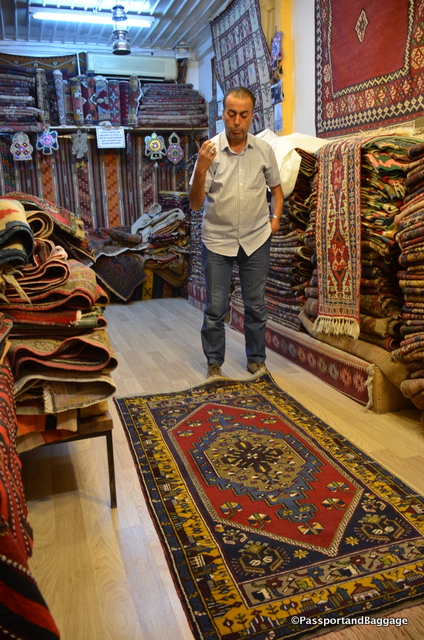
This Kilim has the scorpion pattern in the middle which signifies strong friendship and the border is the family pattern represented by the cityscape.
In wondering the town I stumbled across a very large cemetery in the middle of town. At the entry was the tomb of Seyid Burhanetin an important scholar in his time (1165-1244). This tomb, constructed over his grave was built in 1894. The cemetery takes Seyid’s name, but the most information I could find about it was that it has a Facebook page.
So many of the gravestones have been completely worn away, giving a fair indication of the age, but there were also some contemporary graves in the cemetery as well.

*
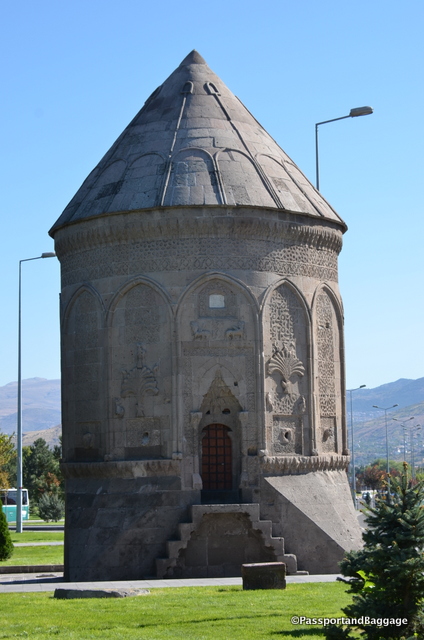
Octagonal tomb of Döner Kümbert was constructed around 1250 and is the final resting place of Şah Chan Hatun, a Seljuk princess
Kayseri is famous for its Pastirma and there are various stories about its origin, but none well documented.
According to the mainstream of the modern linguistic research, the word derives from the Turkish bastırma or “pressed meat” in modern Turkish.
One story says it originated in the city of Kayseri, where there was a Byzantine dish called pastón, which would be translated as “salted meat” and was apparently eaten both raw and cooked in stews.
Pastırma is prepared by salting the meat, then washing it with water and letting it dry for ten to 15 days. After that the blood and salt is squeezed out of the meat which is then covered with a cumin paste made with crushed cumin, fenugreek, garlic, and hot paprika, followed by thorough air-drying.
I had it cooked for breakfast, it was delicious. I also bought several links of it for the rest of the trip to eat as hors d’oeuvres with beer, when I can find beer. Having had a bit while writing this, I can assure you it is delicious, albeit, very, very rich.
I found these bins around town, and found them rather ingenious. I also witnessed a young boy toss something on the ground, his father stopped, yelled at him to pick it up. I was so impressed.
